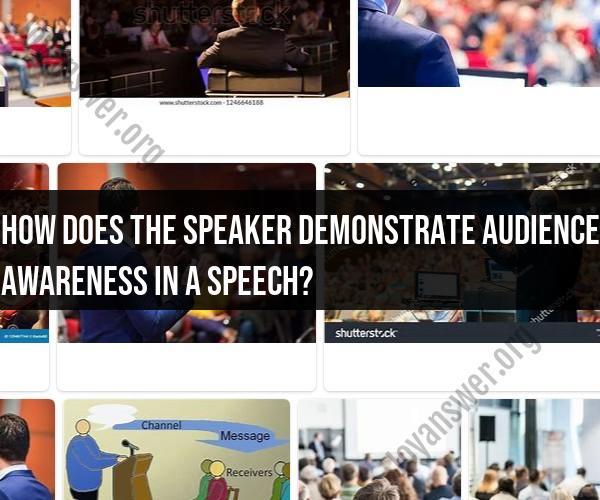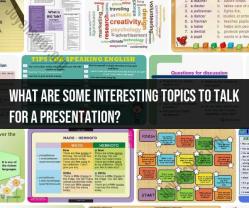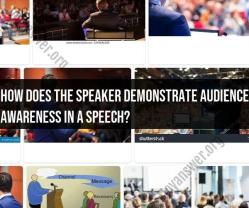How does the speaker demonstrate audience awareness in a speech?
Demonstrating audience awareness in a speech is crucial for effectively connecting with your listeners and conveying your message in a way that resonates with them. Here are some techniques and strategies that speakers can use to demonstrate audience awareness:
Research Your Audience:
- Before your speech, gather information about your audience's demographics, interests, knowledge level, and expectations. This can be done through surveys, interviews, or observation.
Adapt Your Language and Vocabulary:
- Tailor your language and vocabulary to match the understanding and preferences of your audience. Avoid jargon or technical terms that may be unfamiliar.
Address Their Needs and Interests:
- Frame your speech content to address the specific needs, interests, and concerns of your audience. Show them how your topic is relevant to their lives or experiences.
Use Relevant Examples and Analogies:
- Incorporate examples, analogies, and anecdotes that your audience can relate to. This helps in making abstract concepts more concrete and relatable.
Consider Cultural Sensitivity:
- Be aware of cultural differences and sensitivities within your audience. Avoid offensive language or topics that could alienate certain groups.
Engage with Questions and Interaction:
- Encourage audience participation through questions, polls, or discussions. This not only keeps them engaged but also allows you to gauge their understanding and interests.
Maintain Eye Contact:
- Make eye contact with different individuals in the audience. This conveys a sense of connection and engagement with your listeners.
Adjust Your Tone and Delivery:
- Adapt your tone, volume, and delivery style to match the mood and preferences of your audience. For example, a motivational speech may require an enthusiastic tone, while a serious topic may call for a more solemn tone.
Time Management:
- Be mindful of your audience's time constraints. Stick to your allotted time and avoid going over schedule, as this can lead to disengagement.
Provide Clear Signposts:
- Use clear transitions and signposts in your speech to guide your audience through your message. Let them know what to expect next and how the different parts of your speech relate.
Respond to Feedback:
- Be open to feedback and questions during or after your speech. Address audience questions or concerns to demonstrate that you are attentive to their needs.
Show Empathy and Understanding:
- Express empathy and understanding toward the challenges, concerns, or experiences of your audience. This helps build a rapport with them.
Use Visuals Wisely:
- If you use visual aids, ensure that they are clear and enhance your message rather than confuse or overwhelm your audience.
Practice and Rehearse:
- Rehearse your speech multiple times to ensure that you can smoothly adapt to your audience's reactions and adjust your delivery as needed.
Remember that effective audience awareness is not a one-time action but an ongoing process throughout your speech. Pay attention to non-verbal cues, such as facial expressions and body language, and be ready to adjust your approach based on the audience's response. Ultimately, audience awareness is about building a connection and ensuring that your message resonates with those you are addressing.





